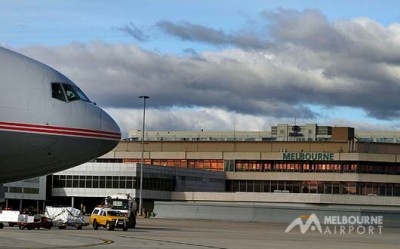
Photo courtesy of Melbourne Airport.
Melbourne Airport has decided on the preferred orientation for its third runway, which will be included in the airport’s draft Master Plan to be published for public comment in early 2013.
Melbourne Airport CEO Chris Woodruff said the airport proposed the construction of a new east-west runway to provide additional capacity for the forecast growth in aircraft movements atMelbourneAirportby the end of this decade.
“The Melbourne Airport draft Master Plan envisages that a new runway will be needed around 2018-2022 to meet the demand from domestic and international airlines as the number of passengers travelling through Melbourne continues to grow.
“Passenger numbers are forecast to reach 40 million by the end of the decade, and more than 60 million by 2033.”
The proposed third runway will operate in parallel to the existing east-west runway (RWY 09/27) as well as the existing north-south runway (RWY 16/34). The new runway will be approximately 3000 metres in length and 60 metres wide. It will be capable of handling aircraft up to the size of an A380.
Mr Woodruff said a range of criteria had been assessed in making the decision to select the east-west runway orientation. These included the capacity the runway provided to cater for future demand; community and environmental impacts; operational requirements and the cost of construction.
“A new east-west runway will enable Melbourne Airport to handle more aircraft movements, more efficiently. Passengers will spend less time on the ground taxiing to and from terminals, and aircraft will burn less fuel on more direct flight paths and shorter trips from the gate to the runway,” Mr Woodruff said.
The proposed east-west runway would have a capital cost of around $500 million and a construction period of between two and four years.
Mr Woodruff said the development of a third runway was consistent with the ultimate development concept for Melbourne Airport, and previous Master Plans had always envisaged a third and fourth runway being constructed.
The noise and planning overlays for Melbourne Airport have also reflected the impact of a third and fourth runway. The ‘noise contours’ for Melbourne Airport will be updated in the 2013 draft Master Plan to reflect the proposed third runway.
“We expect there will only be a slight variation to the noise contours which are used for planning purposes compared to the current contours. However, there will be some areas within the existing noise contours that will experience more aircraft flying overhead as a result of the construction of a new runway,” Mr Woodruff said.
“In the course of planning for a third runway, we will be working closely with various stakeholders, including Airservices Australia, on measures to minimize the noise impact on our neighbours, while ensuring we continue to operate the airport in the most efficient way possible,” Mr Woodruff said.
The proposed third runway will be shown in the draft Master Plan for Melbourne Airport, which will be submitted, to the Commonwealth Government for approval in 2013. This is a requirement of the Commonwealth Airports Act 1996. The draft Master Plan, including the updated noise contours, will be issued for public consultation in the first quarter of 2013. Following the public comment period, the draft master plan is submitted to the Commonwealth Minister for Infrastructure and Transport. When approved, the Master Plan sets out the future development of the airport over the next two decades.
The construction of a third runway will require a separate planning, consultation and approval process, which is expected to be carried out by 2015/16. A new runway would have a construction time frame of two to four years, with the new runway proposed to be operational around 2018-2022.
Mr Woodruff said the third runway would be part of a program of investment of up to $10 billion over the next two decades in the growth of Melbourne Airport as the aviation gateway to Victoria and south-eastern Australia.
“Airports are critical pieces of our national infrastructure, and our draft Master Plan will set out the future vision for Melbourne Airport as a 24-hour gateway for the movement of people and goods to destinations and markets around the world,” Mr Woodruff said.
An economic and social impact study conducted for the draft Master Plan found that Melbourne Airport currently supports 14,300 jobs and contributes $1.47 billion to Victoria’s Gross State Product.
By 2033, the number of jobs directly related to Melbourne Airport’s operations will grow to 23,000 and the airport’s contribution to GSP will have more than doubled to $3.2 billion. The value of spending by interstate and international visitors who travel through Melbourne Airpor twill grow from $8.3 billion in 2012 to $18.5 billion in 2033.





